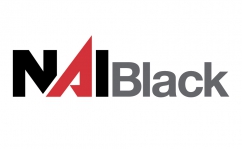NFTs have been all over the news in recent months – with some raking in whopping amounts for digital art on auction – but what exactly are they and why are they now being linked to commercial real estate (CRE) and property sales?
Dealing in definitions
NFT stands for non-fungible token. Something that is fungible is easily exchanged. So, for example, a $10 bill can be easily and equitably exchanged for two $5 bills. Gold is also famously fungible. You can take an ounce of gold in jewelry or nuggets, melt it down and remake it in another form, and it retains the value of its weight in gold.
Bitcoin, part thereof, and other cryptocurrencies, are also fungible. But the technology that underpins cryptocurrency – the blockchain – means that we can trace each individual instance from owner to owner, crypto-wallet to crypto-wallet.
Then there are those things that can be valued but not easily divided up and exchanged – like art. So, something like an original artwork or a vintage Cartier timepiece is worth more than the paper and paint or weight of gold used to make it, because of things like design and origin.
So, with NFTs, we have linked a specific token to blockchain technology so that it can be authenticated using the blockchain. This allows it to work as a certificate of ownership.
Application in CRE
When this is applied to property and CRE, we start to see how “tokenization” can support ownership and part-ownership of physical items and digital properties:
- One well-known example of the digital variety is Canadian artist Krista Kim’s Mars House. This digital rendering earned its maker some $500 000.
- In late March 2021, an NFT was created to rent a (real, physical) house in the Hamptons, for the month of August.
- In April 2021, a historic and architecturally significant home in New York state has been listed on the crypto art marketplace OpenSea, and claims to be the first “art as architecture NFT”.
- Virtual and digital properties within their own universes or those of specific games are also achieving huge interest.
- In the UK, the land registry has been investigating whether they can use a token system, and told the BBC that the opportunity they see in NFTs lies in innovating property lending models.
The building block(chain)s
Beyond NFTs, commentators are also seeing the potential that the distributed ledger technology (DLT) has for innovation in CRE. There are already a number of startups dabbling in these waters – with the hopes that it could speed up and democratize both homeownership and property investment.
Proceed with caution
It is not without its critics, though, including investment analysts and writers who have cautioned buyers not to get too caught up in the trend.
As a Reuters report outlines: “Investors caution, however, that while big money is flowing into NFTs, the market could represent a price bubble, with the risk of major losses if the hype dies down. There could also be prime opportunities for fraudsters in a market where many participants operate under pseudonyms.”
“At NAI Global, we have a large network of capital market experts to draw from across the world, and across specialties,” explains Jay Olshonsky, President & CEO of NAI Global. “So we have the capability to stay on top of these kinds of new market innovations, without running the risk of being swept up in the trendiness of them.”






